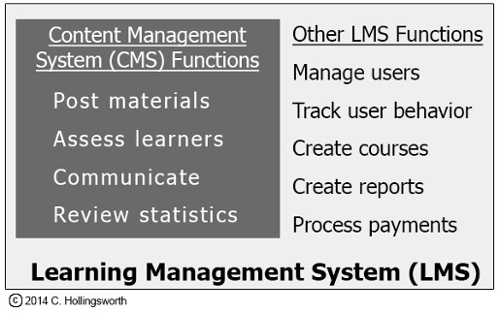Learning Environment
We all understand the traditional learning environment of a classroom, but it's harder to "picture" a learning environment that is online and not a physical space. Literature that discusses online learning uses terms such as LMS (learning management system) and CMS (content management system) to define the environment in which learning occurs at a distance with the faculty and learner physically separated. This environment may include:
- Web-based course content
- Course administrative functions such as student rosters and grade submissions
- Course tools such as discussion forums, chats, email, gradebooks, and assignment submissions
- Links to media and websites
- Access to video and web conferencing systems
People often use the terms LMS and CMS interchangeably although they have distinct, but subtle, differences.
- A CMS has a more narrowly defined purpose—that of managing an online course's content. Instructors can post course materials, assess learners, communicate, and review statistics of user logins and activities.
- An LMS houses content, but also includes all of the other functions that are necessary for the implementation and delivery of an online course including course creation, user registration, payment, receipt generation, report creation, content access, and progress tracking. The illustration below identifies these key points.
LMS and CMS Comparison

A CMS is a contained function set within an LMS that has other supporting functionality.
As you can see some of the similarities and differences are subtle and some of the functions cross-over as both LMSs and CMSs become more robust. You should use the term your institution uses.
In the next two sections, we'll discuss terms associated with what is probably the most important function of a learning environment—communication. The first we'll present concerns communication timing.
